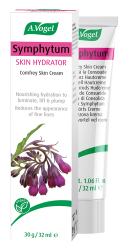Does sunlight age your skin?
When it comes to premature ageing, there can be a wide number of factors at play, from your diet to lifestyle habits like exercise and smoking. However, despite these variables, sun exposure still remains the biggest culprit when it comes to premature ageing, so much so that sun-induced ageing has its own name, photo-ageing!
In fact, it’s estimated that UVA and UVB rays accounts for 80% of all extrinsic ageing; a shocking statistic but one that is backed up by science.1 In one study, 298 Caucasian women, between the ages of 30 and 78, were divided into two groups based on their history of sun exposure – sun seekers and those who tried to avoid sun. The study revealed that there was a strong link between sun exposure and ageing across all groups, with wrinkles being closely connected to UV exposure.2
And this is just one of many, many studies that have investigated the correlation between sun exposure and ageing. Another study, this time looking at Japanese women, found that those from the sunnier southern part of country had longer wrinkles and poorer skin hydration compared to those from the northern Akita prefecture.3
But why does the sun have this effect on our skin? To answer that question, we first need to take a look at how your skin protects itself from the sun and how this safety mechanism can go wrong.
Your skin’s natural sunscreen
Your skin’s primary way of protecting itself from sunlight is melanin. You might know melanin primarily as a skin pigment that determines your complexion, but these epidermal cells are multitalented. They actually help your skin to absorb sunlight, dissipate it as heat and work to repair the damage done by free-radical spreading UV rays.
The more exposure you have to UV light, the more melanin cells that will be produced, which explains where that all so coveted tan originates from. Unfortunately, many people simply don’t produce melanin efficiently enough to protect their skin efficiently and thus sunlight can penetrate this barrier to damage your skin.
There are two main types of sunlight response for premature ageing and sun-related damage: UVA and UVB light waves.
What is the difference between UVA and UVB?

UVA and UVB are both forms of ultraviolet light, but they work in very different ways.
Let’s start by taking a look at UVB rays. This form of UV radiation is the one that’s responsible for your sunburn, but it actually has a shorter wavelength than UVA rays. These shorter wavelengths mean that it can’t penetrate quite as deeply into your skin as UVA rays, but it can still do a fair amount of damage to your outer layer of skin, the epidermis. UVB lightwaves can be present all year round but, like UVA rays, they are generally the most potent during summer.
Now let’s examine the big bad, UVA lightwaves. UVA lightwaves are considered to be more dangerous than UVB rays because they have a longer lightwaves, which means they can penetrate deeper into your skin, affecting your dermis.
Around 95% of the sunlight you’re exposed to will be UVA light, which is extremely worrying as this particular form of UV light is the one responsible for premature ageing and most instances of skin cancer.4 This is because these lightwaves can damage your kerinocytes as well as other skin cells, reducing your skin’s natural elasticity and promoting the appearance of fine lines and wrinkles.
When are you the most vulnerable to UV radiation

Okay, so most of you probably know that summer tends to be the key time of year when you are most susceptible to UV radiation and sun-related skin damage; however, there are a few other risk factors that are worth bearing in mind.
- 10am-2pm: When it comes to sun related damage, UV lightwaves tend to be at their strongest in the middle of the day, usually between 10am and 2pm. This is the peak time where your skin is most likely to be damaged which is why it might be worth seeking shelter during these hours
- UV rays can travel through glass: If you’re sitting indoors or in your car, out of direct sunlight then you probably feel pretty safe; however, UVA lightwaves can travel through glass so it’s important to bear this in mind, particularly if you are going on a long journey by car, bus, or train!
- Water and sand reflect the sun: It’s estimated that sea water and sand can reflect up to 25% of UV light, increasing your exposure.5 Submerging yourself in water is not a guarantee of protection, quite the opposite
- Tanning beds utilise UVA light: Every year, thousands of us seek out sunbeds to get a glowing, sun kissed complexion but this habit is not without its problems. Many tanning beds utilise UVA light which means, over time, you could be ageing your skin and potentially increasing your risk of developing sun cancer6
- Winter is no guarantee of safety: While summer is the peak season for sun damage, don’t go under the assumption that your skin is safe in winter. The temperature might be lower but sunlight on a winter’s day, is still sunlight and therefore capable of damaging your skin. In fact, snow reflects up to 80% of UV light so it’s definitely worth bearing this in mind when the cooler weather comes in!
How do I protect my skin from UV radiation?
As you’re probably starting to realise, protecting your skin from UV radiation is essential if you want to retain its youth and elasticity. That’s why below, I’m going to go into a little bit more detail about the best ways of protecting your skin.
1. Use suncream

My first, and probably most obvious, piece of advice is not to skimp when it comes to suncream. Most of us just aren’t topping up enough when it comes to applying suncream, or we simply don’t opt for the right SPF factor. Ideally, you want a broad spectrum suncream that’s going to protect your skin from both UVA and UVB rays, plus the higher the SPF factor, the better, especially if you’re going to be out and about in hotter, more exotic climates!
It’s also important to think about when and where you’re applying your cream. Don’t wait until you’re at the beach, apply your suncream before you leave the house and remember to think about areas like your feet, your neck and your ears too! Often these parts of your body get neglected but they are just as vulnerable, if not even more so, to the effects of UV radiation.
My top tip: Choosing the right suncream for you can be very tricky as, unfortunately, most conventional suncreams contain a whole host of additives and ingredients which could potentially upset sensitive skin. That’s why I’d recommend investigating a natural brand like Green People!
2. Seek out the shade

Seeking out the right kind of shade is pivotal if you’re going to be out and about in the sun, especially between 10am and 2pm. Sheltering indoors is probably you’re best option as trees, parasols and canopies don’t offer complete protection, but, in a pinch, they will do. The WHO also offer a good tip that’s worth remembering – if you’re shadow is shorter than you, it’s probably a good time to get out of the sun!7
3. Wear lighter, looser clothing

If you’re wearing tight, restrictive, dark clothing, not only are you increasing your risk of chafing, you could be making yourself more susceptible to sunburn. Dark clothing tends to soak up UV light, which is why I usually suggest going for comfort. Wear looser, lighter coloured clothing if you’re out and about. This will allow your skin to breathe whilst the lighter colours won’t attract so much sunlight.
4. Think about the medication you’re taking

There are some medications that do make you more vulnerable to sun damage. These are known as ‘photosensitive’ medicines and the list usually includes blood pressure medication, antibiotics, antihistamines and oral contraceptives. If you are taking any of these medicines, you may want to reconsider how much time you’re spending in the sun as your skin could be more sensitive and susceptible to the harmful influence of UV lightwaves.
5. Don’t overuse tanning beds

Tanning beds are a frequent pre-holiday treatment that is often used to give the illusion of sun kissed, bronzed skin. However, as I mentioned earlier, they do utilise UVA light in order to increase your melanin production. This type of exposure, if on-going, can be very damaging for your skin, so where possible try to avoid using tanning beds. Tanning creams are often seen as a more affordable alternative, but again, these can be potentially irritating for your skin so it might be worth looking into more natural options, such as Green People’s Self Tan Lotion.
6. Keep moisturising

Sunlight can be very harsh on your skin, depleting its stores of antioxidants and stripping away essential oils and moisture. That’s why, in addition to regularly applying suncream, it might be a good idea to keep some moisturiser handy too. This should help to restore some moisture to your epidermis and ease any irritation or redness. Here, you might want to consider our soothing Neem Cream, which has natural anti-inflammatory properties, helping to nourish sensitive, inflamed skin.
My Top Tip: Apply our soothing Neem Cream to help calm irritatied, inflamed skin that's being affected by eczema, insect bites or even sunburn! Apply our soothing Neem Cream to help calm irritatied, inflamed skin that's being affected by eczema, insect bites or even sunburn!
|
1https://www.ncbi.nlm.nih.gov/pmc/articles/PMC3790843/
2https://www.ncbi.nlm.nih.gov/pmc/articles/PMC3790843/
3https://www.ncbi.nlm.nih.gov/pubmed/11514124
4https://www.skincancer.org/prevention/uva-and-uvb
5https://www.who.int/uv/faq/whatisuv/en/index3.html








